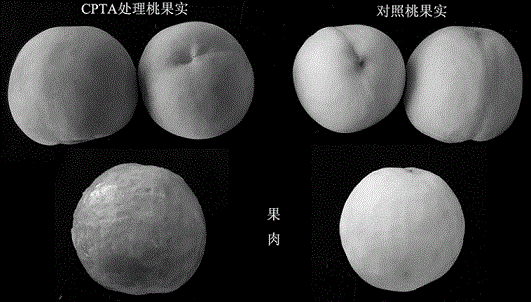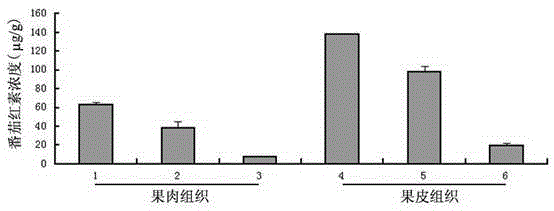Method for detecting synthesis capability of carotenoid in fruit
A technology of carotene and detection method, which is applied in the direction of measuring devices, instruments, scientific instruments, etc., and can solve the problems of small accumulation, difficulty in carotenoid synthesis ability, small accumulation of carotenoid, etc.
- Summary
- Abstract
- Description
- Claims
- Application Information
AI Technical Summary
Problems solved by technology
Method used
Image
Examples
Embodiment Construction
[0019] The technical principle of the present invention is as figure 1 as shown, figure 1 Route A in the middle represents the synthesis and degradation pathway of fruit carotenoids under natural conditions. It is represented by a total pathway, without distinguishing between single-path degradation and multi-path degradation. The degradation products of carotenoids; Route B indicates the synthesis and degradation pathways of carotenoids after CPTA treatment of fruits, and also does not distinguish between single-path degradation and multi-path degradation. This route indicates that because of the blocking effect of CPTA on lycopene, Carotenoids are accumulated in a large amount in the form of lycopene, and less carotenoid degradation products are obtained. Therefore, the synthesis ability of fruit carotenoids can be evaluated by detecting the accumulation of lycopene.
[0020] The detection method of the present invention is applicable to multiple fruits, and the specific st...
PUM
| Property | Measurement | Unit |
|---|---|---|
| Wavelength | aaaaa | aaaaa |
Abstract
Description
Claims
Application Information
 Login to View More
Login to View More - R&D
- Intellectual Property
- Life Sciences
- Materials
- Tech Scout
- Unparalleled Data Quality
- Higher Quality Content
- 60% Fewer Hallucinations
Browse by: Latest US Patents, China's latest patents, Technical Efficacy Thesaurus, Application Domain, Technology Topic, Popular Technical Reports.
© 2025 PatSnap. All rights reserved.Legal|Privacy policy|Modern Slavery Act Transparency Statement|Sitemap|About US| Contact US: help@patsnap.com



